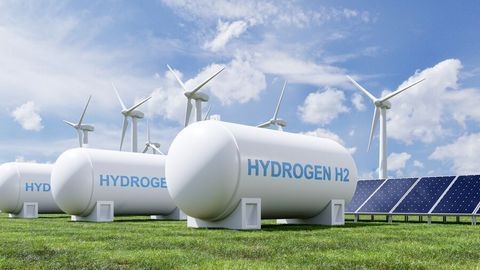Woodman's v. Clorox: 'Does Size Matter? Not Always' Under the Robinson-Patman Act
Client Alert | 4 min read | 08.17.16
In Woodman's Food Market v. Clorox Co., the Seventh Circuit has dismissed a grocery chain's claim that Clorox's refusal to sell it the same large package sizes it sold to club stores violates the Robinson-Patman Act. Chief Judge Diane Wood's concise opinion holds that section 2(e) of the Act pertains "only to promotional services or facilities" and that "package size alone is not a promotional service or facility." The decision continues a long trend of cases attempting to harmonize the Act's historical emphasis on the protection of small retailers with the broader focus of the antitrust laws on competition and "the consumer welfare norm." It provides valuable guidance to manufacturers who differentiate their offerings to different retail channels, but leaves other key issues under the Act unresolved.
Background
As we observed when the district court declined to dismiss Woodman's claims, Clorox sells some of its products in "large packs" (e.g., 40-ounce salad dressing bottles, 460-count plastic food-storage bags, 42-pound cat litter containers), generally to "club" stores like Costco and Sam's Club. Woodman's is a local grocery chain that had purchased large packs from Clorox until Clorox decided that, to "simplify its go to market strategy," "streamline operations," and maximize sales, it would sell large packs only to club stores. Woodman's and similar stores were thereafter forced to offer their customers only the "less convenient and more expensive (measured by unit price) items." Although it initially asserted claims under Sections 2(a), (d), and (e), Woodman's eventually narrowed its claims to focus on Section 2(e), which does not require proof of anticompetitive effect and is, therefore, the equivalent of a per se prohibition.
Analysis
Woodman's alleged that Clorox had violated Section 2(e) because its change of marketing strategy constituted a discriminatory promotional "service or facility." First, Woodman's claimed that Clorox's policy denied it the larger unit discount typical of larger pack sizes, and second, that larger pack sizes offered additional convenience to shoppers and therefore promoted their resale. The district court permitted the 2(e) claim to go ahead.
The Seventh Circuit was not persuaded, and rejected both of Woodman's theories. First, it held that "[t]o the extent that Clorox's bulk packaging is viewed as a quantity discount, it must be analyzed under [Section 2(a)]," which outlaws discrimination only where it impacts competition. Second, it read the Act's prohibitions on discriminatory promotional activity narrowly. Noting that Sections 2(d) and (e) "target only a narrow band of conduct that Congress identified as a problem: the provision of advertising-related perks to purchasers as a way around Section 2(a)'s prohibition on price discrimination," the court found that "package size alone is not a promotional "service or facility." The Seventh Circuit openly fretted about the real-life business consequences of allowing Woodman's claims to go forward. In its words, an interpretation applying Section 2(e) to packsizes would "sweep[] any attribute of [a] product that makes it more desirable to consumers" into its ambit, "wip[ing] out the seller's discretion to choose which products to sell to whom," in conflict with long-standing Supreme Court precedent.
The decision is notable for its heavy deference to the Federal Trade Commission's current views on the Act. Woodman's and the district court had relied on decades-old Commission precedent, noted in the Fred Meyer Guides, applying Section 2(e) to packaging. But the Seventh Circuit declined to rely on those cases, instead crediting the position taken by the Commission in its amicus brief that 2(e) should no longer be read to apply to packaging alone.
It is important to note, however, that the decision did not hold that packaging discrimination could never be covered by Section 2(e). The court wrote that it is possible "to imagine package size or design as part of a 'service or facility' when combined with other promotional content." The court went on to cite two specific examples given by the FTC: "football shaped packages offered just before the Super Bowl, or Halloween-branded 'fun size' individually wrapped candies near Halloween." Although packaging alone may not constitute a promotion service or facility, therefore, "promotional packaging" might still fall within the scope of Section 2(e); what exactly constitutes promotional packaging has yet to be defined.
The Upshot
Companies with differentiated distribution channels should welcome the Seventh Circuit's decision. Woodman's supports two key elements common in manufacturers' channel and pricing strategies:
- The ability to offer channel-specific packaging sizes selectively and at their business discretion – permitting them to be responsive to increasing demands by club and superstore retailers for exclusive offerings; and
- The ability to reduce Robinson-Patman litigation risk by differentiating the range of products offered to different types of customers, rather than by discriminating in price on product sizes offered to all customers.
Woodman's is good news, but it does not address many of the central difficulties manufacturers face under the Robinson-Patman Act. Still, the decision adds to and extends a now well-developed line of cases limiting the reach of the Act, and attempting to align it where possible with the rest of the antitrust laws. For now, the risk of litigation – particularly from disgruntled or terminated downstream customers – warrants continued, sensible efforts to design pricing systems with Robinson-Patman compliance in mind.
Contacts
Insights
Client Alert | 2 min read | 12.19.25
GAO Cautions Agencies—Over-Redact at Your Own Peril
Bid protest practitioners in recent years have witnessed agencies’ increasing efforts to limit the production of documents and information in response to Government Accountability Office (GAO) bid protests—often will little pushback from GAO. This practice has underscored the notable difference in the scope of bid protest records before GAO versus the Court of Federal Claims. However, in Tiger Natural Gas, Inc., B-423744, Dec. 10, 2025, 2025 CPD ¶ __, GAO made clear that there are limits to the scope of redactions, and GAO will sustain a protest where there is insufficient evidence that the agency’s actions were reasonable.
Client Alert | 7 min read | 12.19.25
In Bid to Ban “Woke AI,” White House Imposes Transparency Requirements on Contractors
Client Alert | 5 min read | 12.19.25
Navigating California’s Evolving Microplastics Landscape in 2026
Client Alert | 19 min read | 12.18.25
2025 GAO Bid Protest Annual Report: Where Have All the Protests Gone?




